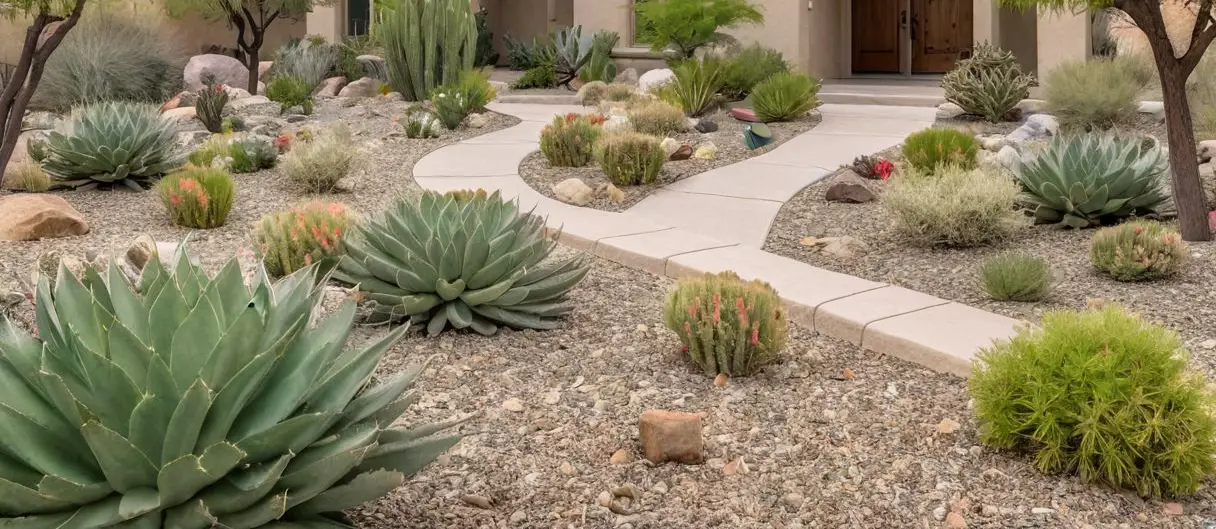The Art of Xeriscaping: Creating a Water-Efficient Landscape
In an era where water conservation is increasingly vital, xeriscaping offers a sustainable solution for creating beautiful, low-maintenance landscapes that thrive with minimal water usage. Derived from the Greek word "xeros," meaning dry, xeriscaping is a landscaping approach that emphasizes water efficiency, drought tolerance, and environmental sustainability. Let's explore the principles and practices of xeriscaping to help you transform your outdoor space into a vibrant oasis while conserving water resources.

Assess Your Site
Before embarking on your xeriscaping journey, assess your site's environmental conditions, including sunlight exposure, soil type, and moisture levels. Understanding these factors will guide your plant selection and design decisions.
Choose Drought-Tolerant Plants
Selecting plants that are well-adapted to your region's climate and soil conditions is key to xeriscaping success. Opt for native or drought-tolerant species that require minimal irrigation once established. Succulents, ornamental grasses, and Mediterranean herbs are excellent choices for xeriscape gardens.
Group Plants by Water Needs
Organize your landscape into hydrozones based on plants' water requirements. Grouping plants with similar watering needs allows for more efficient irrigation practices, ensuring that each plant receives the appropriate amount of moisture without wastage.
Implement Water-Saving Techniques
Incorporate water-saving techniques such as drip irrigation, mulching, and rainwater harvesting to minimize water usage and maximize efficiency. Drip irrigation delivers water directly to plant roots, reducing evaporation and runoff, while mulching helps retain soil moisture and suppresses weed growth. Rainwater harvesting systems capture and store rainwater for later use in irrigation, reducing reliance on municipal water sources.
Design for Water Conservation
Utilize design elements such as swales, berms, and rain gardens to manage water runoff and promote infiltration. Swales are shallow depressions that collect and channel water across the landscape, while berms are mounded earthworks that help direct water flow and prevent erosion. Rain gardens are planted depressions designed to capture and filter stormwater runoff, reducing pollution and replenishing groundwater supplies.
Practice Soil Improvement
Improving soil health is essential for water-efficient landscaping. Amend soil with organic matter such as compost or aged manure to enhance its structure, fertility, and water-holding capacity. Healthy soil teeming with beneficial microorganisms supports plant growth and resilience to drought stress.
Embrace Low-Maintenance Design
Xeriscaping promotes low-maintenance landscapes that require minimal inputs of water, fertilizer, and labor. Choose hardy, resilient plants that can thrive with little intervention once established, reducing the need for ongoing maintenance tasks.
Educate and Inspire
Share your xeriscaping journey with others to inspire and educate your community about the benefits of water-efficient landscaping. Host workshops, garden tours, or online resources to share tips, techniques, and success stories, empowering others to embrace sustainable gardening practices.
Xeriscaping offers a holistic approach to landscaping that balances beauty, functionality, and environmental responsibility. By embracing the principles of xeriscaping and implementing water-efficient practices, you can create a resilient and sustainable landscape that thrives in harmony with nature while conserving precious water resources for future generations.
Are you ready to embark on your xeriscaping adventure? Let's transform your outdoor space into a water-wise haven that's as beautiful as it is sustainable.